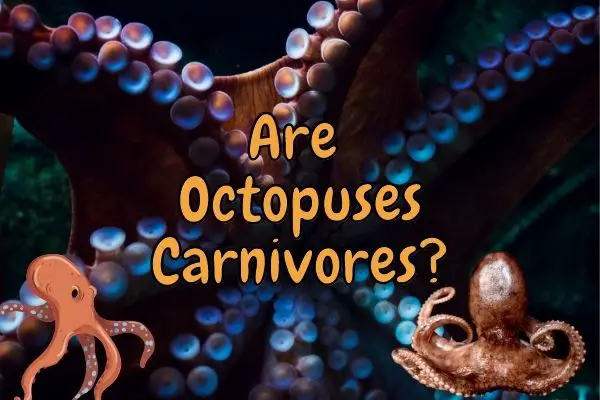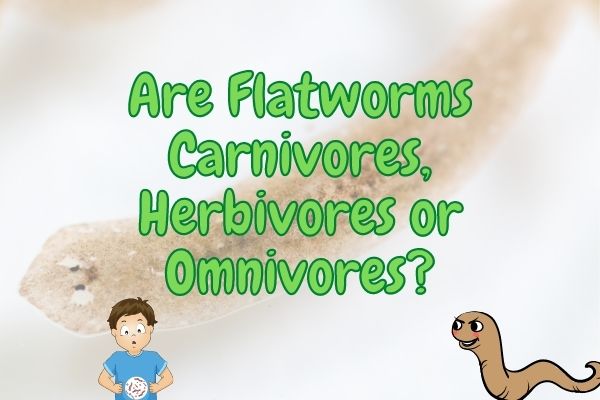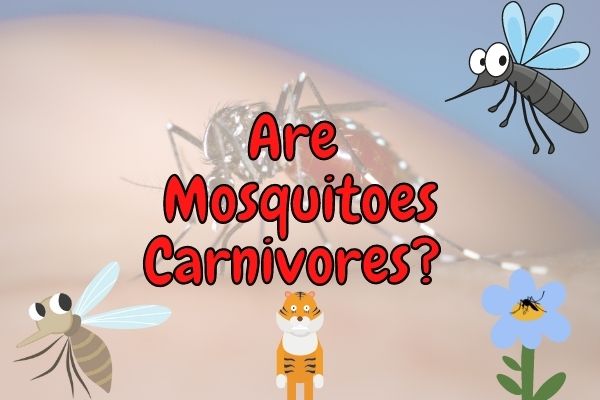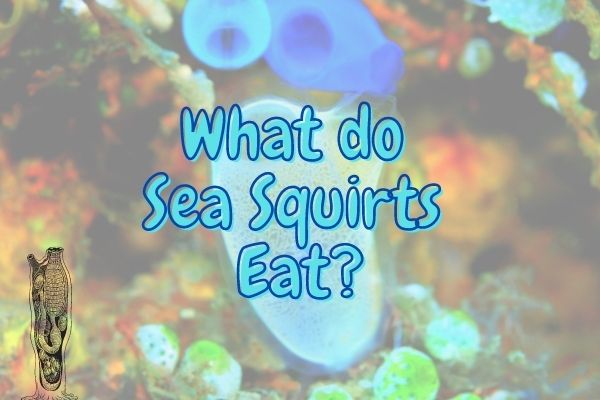Octopuses are among the most intelligent animals on the planet. They are capable of learning quickly and solving complex problems. Octopuses are also highly aggressive, cannibalistic, and curious.
Octopuses are carnivorous animals, which means that they only eat meat. They are not omnivores, but predators that exclusively hunt other animals, including fish, crustaceans, and mollusks. There are no known examples of octopuses eating plants or seaweed as a part of their diet.
Octopuses are known for their intelligent hunting strategies and the abilities that they will use to outsmart their predators and prey!
Octopuses typically eat snails, clams, and other small shellfish. They will also eat crabs, shrimp, and other crustaceans. They also eat fish and large octopuses may even hunt and eat sharks! Their diet varies depending on what is available in their environment.
Contents
What is so special about octopuses?
Octopuses have well-developed brains, eyes, and arms. The brain is large compared to their overall body size, and the arms are constructed like human arms, with five joints.
Octopuses have gills that are able to extract oxygen from the water, but they cannot breathe on land. The gills are located on either side of the mantle, just behind the arms.
Octopuses have three hearts that they use to transport the oxygenated blood from their gills and around their bodies.
Two of them are dedicated to transporting blood to the animal’s gills, underlining the animal’s oxygen supply reliance on its gill and the importance of constant blood flow to the gills!
Octopuses also have the ability to change color, and are most commonly found with their natural color of dark brown, but have been known to change color to camouflage themselves just like squids do to confuse potential predators.
Although octopuses do not have teeth, they do have a beak similar to that of a parrot that they use to break their prey apart!
In some species, like the giant Pacific octopus, the enzymes are released through the beak of the octopus. After digestion, the octopus absorbs the nutrients.
Octopuses have a complex nervous system, with relatively large brains. They are able to control each of their arms using more than 200,000 neurons. They also possess a specialized organ called the statocyst, which they use a bit like an inner ear to detect vibrations in the water!
The octopus eye is the most complex cephalopod eye that they use to hunt. Its photoreceptors can detect colors but do so in a different way from our eyes!
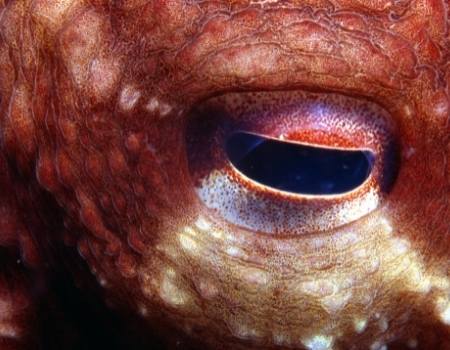
The octopus eye contains a set of lenses, as well as muscles to change the shape of the eye to detect different wavelengths instead of different photoreceptors as humans use to detect colors.
The arms of the octopus are equipped with suction cups, which are controlled by muscles. The suction cups are able to adhere to most surfaces. The octopus is able to change the shape of the suction cups, allowing them to adhere to a variety of surfaces.
The arms of the octopus are highly mobile and contain two different types of muscles. The first type, known as the retractor muscles, allows the arms to pull back into the body. The other type, known as protractor muscles, allows movement when the arms are extended.
Since each arm moves independently of the others, the octopus is able to move them simultaneously in different directions.
The arms are also able to rotate, allowing the octopus to pull itself around objects or latch on to prey – in this way it can sometimes overcome larger animals like sharks!
The octopus has 20 to 30 suckers on each arm. While some species have suckers that are all identical, others have specialized suckers. Some species have suckers arranged in pairs, some in groups of three, and others in patterns of four or eight.
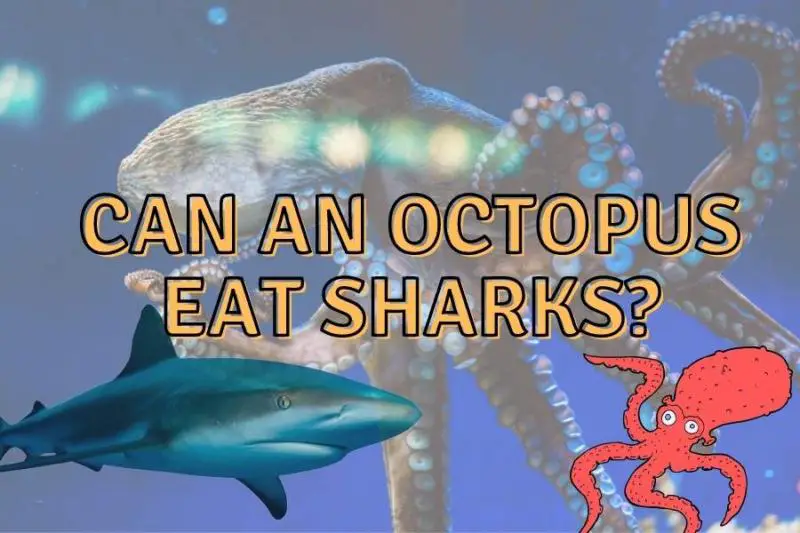
The arms of the octopus are lined with tiny, sharp, chitinous (shell-like) hooks. These hooks help the octopus hold onto its prey, as well as help the octopus escape from predators.
Why are Octopuses Important for the Ecosystem?
Octopuses are important predators in many marine ecosystems. They help to keep populations of other animals in check, which can help to maintain the overall health of the ecosystem.
Octopuses also play an important role in recycling nutrients back into the system.
Octopuses eat a variety of animals, including snails, clams, fish, and crustaceans. When they eat these animals, they break down their bodies and release nutrients back into the water.
These nutrients are then taken up by plants and other organisms and used again. This process helps to keep marine ecosystems healthy and productive.
Octopuses are also known for their intelligence and problem-solving abilities. They have been known to escape from captivity and solve complex puzzles. This intelligence makes them fascinating creatures to study, which can lead to new insights about animal behavior and cognition.
Are Octopus Carnivores, Herbivores or Omnivores?
Octopuses are carnivores because they eat other animals. They do not eat plants, fruits or vegetables. They eat other animals and even those ones with shells and sharp teeth!
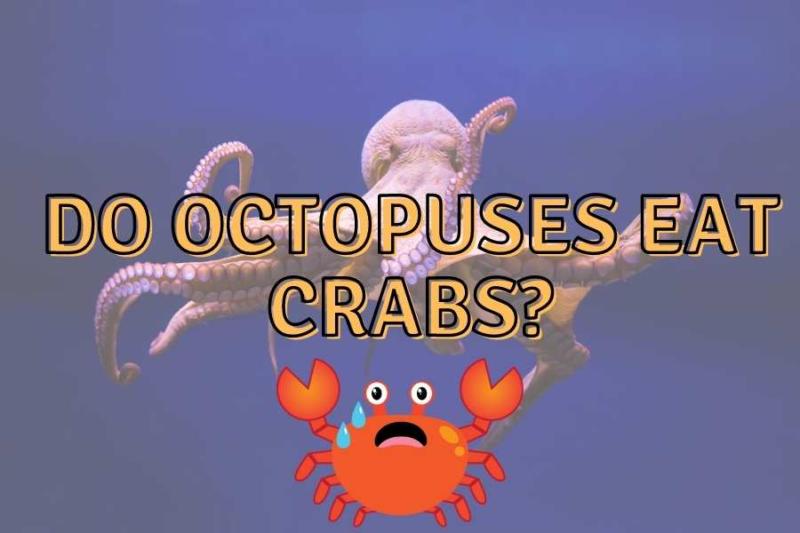
They evolved from a long line of terrestrial animals that did not eat plants. Even pet octopuses will never eat plants. Sometimes, they may get plant matter in their gut, but this is consumed unintentionally.
Is an Octopus a Producer, Consumer, or Decomposer?
Octopuses are consumers because they eat other living things. Octopuses are carnivores, which means that they eat other animals. Only plants as well as some bacteria and protozoa are producers.
An octopus is primarily considered a consumer in ecological terms. As a predator, it feeds on other organisms, such as fish, crustaceans, and mollusks. It actively seeks out and captures its prey using its tentacles and beak-like mouth.
In an ecological food chain or web, organisms are commonly categorized as producers, consumers, or decomposers. Producers, such as plants and algae, are capable of photosynthesis and convert sunlight into energy-rich organic compounds.
Consumers, including animals like octopuses, obtain their energy by consuming other organisms. Decomposers, such as bacteria and fungi, break down dead organic matter and waste, recycling nutrients back into the ecosystem.
While an octopus does not fit into the categories of producer or decomposer, it plays an important role as a consumer within marine ecosystems, regulating prey populations and contributing to the overall balance of the food web.
What Type of Consumer is an Octopus?
An octopus is considered a secondary or tertiary consumer, depending on its specific ecological niche and the complexity of the food web it inhabits.
Secondary consumers are organisms that feed on primary consumers, which are herbivores or organisms that consume producers directly. For example, if an octopus feeds on small fish or crustaceans, which primarily consume algae or plankton, then the octopus would be classified as a secondary consumer.
Tertiary consumers, on the other hand, occupy the higher trophic levels of a food chain or web. They feed on other consumers, including both primary consumers and other secondary consumers. If an octopus preys on other predators like larger fish or even other octopuses, it would be categorized as a tertiary consumer.
The specific feeding habits and diet of an octopus may vary depending on the species, location, and available food sources. Nevertheless, octopuses generally occupy a position as consumers within the marine food chain, exerting their predatory influence on lower trophic levels.
Generally, herbivores are primary consumers, omnivores secondary consumers, and predators are tertiary consumers.
There are very few quaternary consumers in an ecosystem, mostly because a big portion of energy gets lost at each trophic level. Most of the energy animals get from their food, gets lost as heat, and only a small portion is saved as biomass.
Can Octopuses be Considered Decomposers?
Unlike some other mollusks, octopuses do not eat dead animals or carrion. Therefore, they are not considered scavengers or decomposers.
However, the bacteria in the guts of octopuses may be considered decomposers.
Therefore, no octopus species are decomposers because decomposers are mainly bacteria and fungi.
A crucial difference between scavengers and decomposers is that scavengers simply break their food down into smaller pieces; they do not break them down into basic chemical nutrients like decomposers do.
Where are Octopuses in the Food Chain?
Octopuses sit at the top of the food chain and are considered tertiary consumers. The vast majority of an octopus’s diet is composed of small crustaceans like crabs and lobsters, but they also eat fish, snails and clams.
But octopuses can occupy various positions within the food chain, depending on their species, habitat, and available food sources. Their ecological role as predators places them at different trophic levels, influencing the structure and dynamics of marine ecosystems.
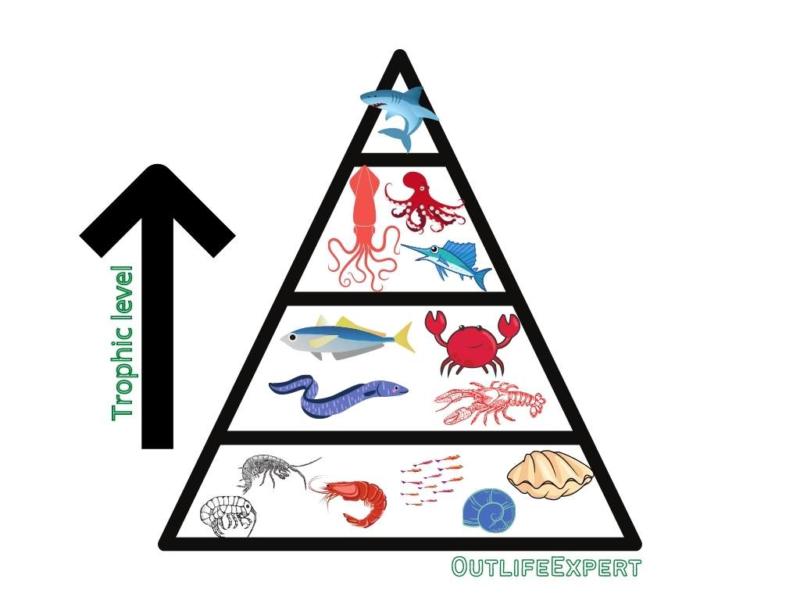
- Secondary Consumers: Many octopus species are considered secondary consumers in the food chain. They feed on primary consumers such as small fish, crustaceans, and mollusks. For instance, an octopus might prey on shrimp or small crabs that primarily consume algae or detritus. By consuming primary consumers, octopuses help regulate their populations and control the flow of energy and nutrients through the food chain.
- Tertiary Consumers: In some cases, octopuses can also be classified as tertiary consumers. This occurs when they prey on other predators within the ecosystem. For example, larger octopuses may feed on other fish, including those that are themselves secondary consumers. By occupying this higher trophic level, octopuses exert top-down control on the population dynamics of other predators, potentially influencing the structure and abundance of species within the ecosystem.
- Opportunistic Feeders: Octopuses are known for their adaptability and opportunistic feeding behavior. They have been observed consuming a wide range of prey items, including various fish, crustaceans, mollusks, and even other cephalopods. This flexibility allows them to exploit different food sources and occupy different positions within the food chain depending on the availability of prey in their environment.
It’s important to note that the exact placement of octopuses in the food chain can vary depending on their specific habitat, diet, and interactions with other species. In some cases, they may function as both secondary and tertiary consumers, depending on the circumstances.
Their predatory role helps maintain the balance and stability of marine ecosystems by controlling prey populations and influencing the energy flow through different trophic levels.
Are Octopuses Autotrophs or Heterotrophs?
Octopuses are heterotrophs because they eat other living organisms. Practically no animals are autotrophic because most animals do not get their energy directly from the sun as plants do.
That is, animals like the octopus do not make their own energy, but need to eat other organisms as their energy and carbon source.
What Animals Hunt and Eat Octopuses?
Octopuses face predation from various marine animals. While they are skilled hunters themselves, capable of evading predators using their agility and camouflage, there are several species that actively hunt and consume octopuses. Here are some examples:
1. Sharks: Certain shark species, such as large coastal sharks like the great white shark and the broadnose sevengill shark, are known to prey on octopuses. Sharks have powerful jaws and teeth that allow them to capture and consume octopuses.
2. Marine Mammals: Marine mammals like dolphins and seals are skilled hunters and can target octopuses as part of their diet. Dolphins, in particular, have been observed tossing octopuses in the air to disable them before consuming them.
3. Fish: Many fish species actively hunt and consume octopuses. Examples include moray eels, grouper, barracudas, and certain species of ray. These fish have various adaptations, such as sharp teeth and jaws, that help them capture and consume octopuses.
4. Birds: Some avian predators also feed on octopuses. Coastal birds like seagulls and cormorants have been observed snatching octopuses from the water’s surface or intertidal zones.
5. Other Cephalopods: Larger species of cephalopods, such as some species of squid, can be predators of smaller octopuses. In some cases, even cannibalism can occur among cephalopods, with larger individuals preying on smaller ones.
It’s worth noting that octopuses have evolved various adaptations to avoid predation, such as their remarkable camouflage abilities, ink sacs to create distractions, and jet propulsion to escape rapidly. These defensive strategies help increase their chances of survival against their predators in the marine environment.
Conclusion
In this blog post I have looked into the diet of the octopus as a fascinating animal that is often misunderstood.
Octopuses are not only interesting because of their unique behavior and appearance, but they are also unique in the sense that although they eat other animals, they are also top predators of many different marine ecosystems too!
Octopuses have evolved multiple mechanisms for catching prey, including soft-bodied animals and hard-shelled animals.
Octopuses frequently store the food they catch to eat later, and they are able to cover large distances during a day and feed on a variety of prey animals!
I hope you enjoy my posts, and do feel free to follow my blog if you would like to read more posts like this in the future.

